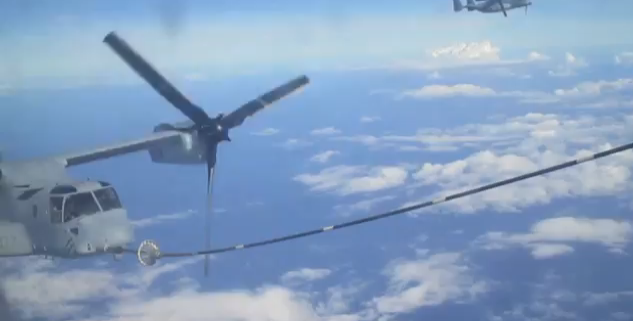There is no room for error when an MV-22B Osprey has to be refueled mid-air.
The following video shows Osprey tilt-rotor aircraft with VMM-262 refueling from a KC-130J belonging to the VMGR-152 during thir flight from Okinawa to Singapore, where the MV-22Bs attended the Singapore Airshow 2014.
Even if Helicopter Air-to-Air Refueling (HAAR) is usually difficult, considered how close those blades look in the video, no doubt it is even harder when the receiver is an Osprey, considered the size and position of the blades.
Obviously, the video doesn’t show anything really dangerous. The Osprey safely takes the fuel and there’s more clearance than it may appear between the hose and the blades. Still, things can really become pesky, in turbulent air, at low level and speed, etc. when large helos or tilt-rotors come close to the refueler.

















